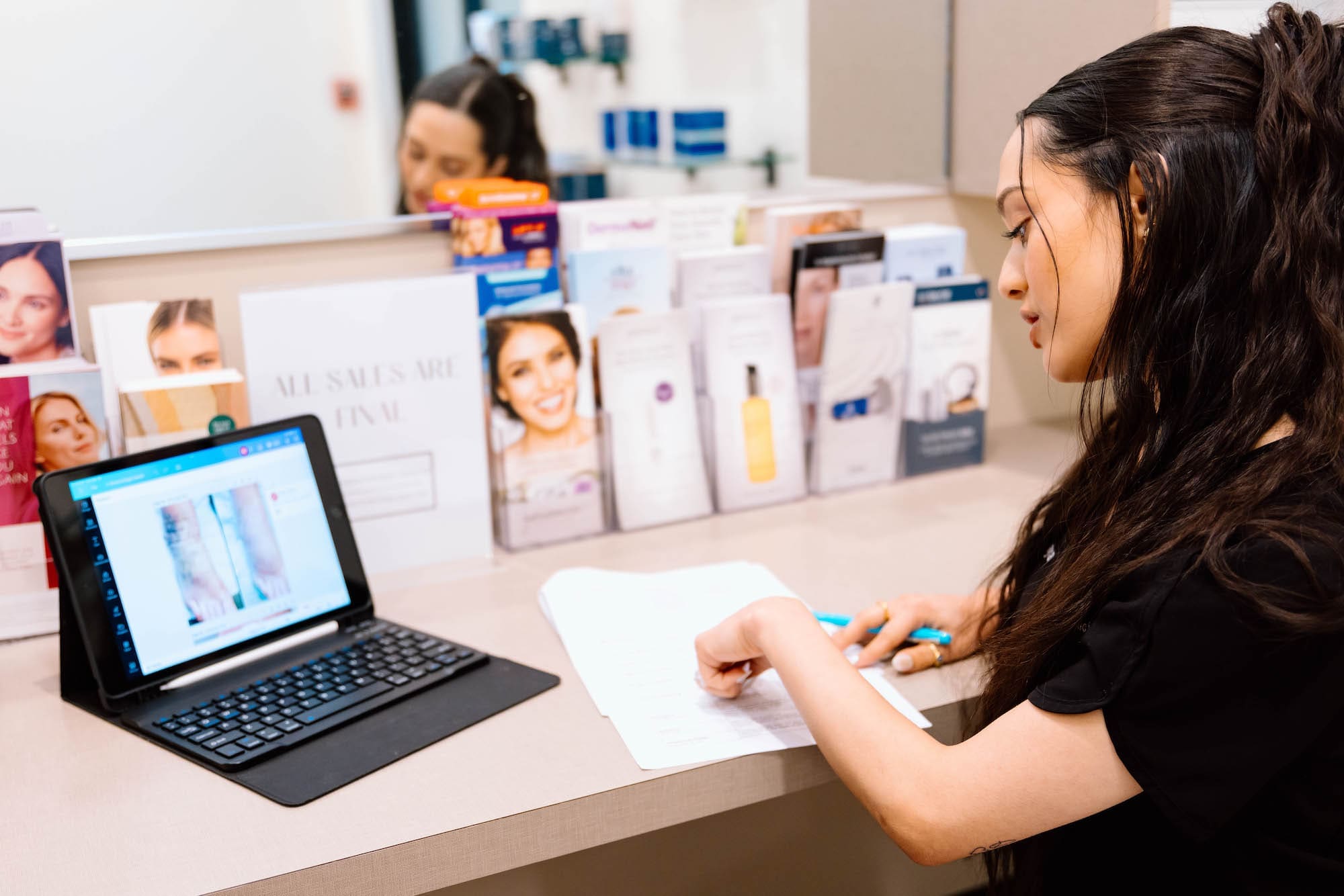Sun Damage & Uneven Skin Tone
In addition to pigment changes, sun damage can make our skin age prematurely and increases our risk of developing certain types of skin cancer. Going out in the sun is a natural part of life but even on cloudy days, the sun can continue to wreak havoc on our skin. Our team at The Dermatology Center utilizes the latest anti-aging techniques and treatments to restore your skin tone and help you protect your skin in order to put your best face forward.

Revitalize Your Skin
There are a number of innovative skin treatments available that can help to reduce the appearance of sun spots and improve uneven skin tone or pigmentation problems. Our team at TDC will listen to your needs and work to develop an individualized treatment plan and long-term skin care regimen to help restore your complexion. We offer a wide range of laser treatments and chemical peels, which will rejuvenate your skin and keep it looking smooth and beautiful.
What Causes Sun Damage & Uneven Skin Tone?
While most sunspots are usually not dangerous, unusual or atypically shaped spots should be evaluated by one of our board-certified dermatologists at The Dermatology Center to make sure they haven’t developed into skin cancer.
In addition to dark spots and freckles caused by sun exposure, there can also be pigmentation problems present at birth, in the form of birthmarks.
Melasma is another pigmentation problem that shows up as dark patches, usually on the face, which can occur with pregnancy, birth control pills or sun exposure.




